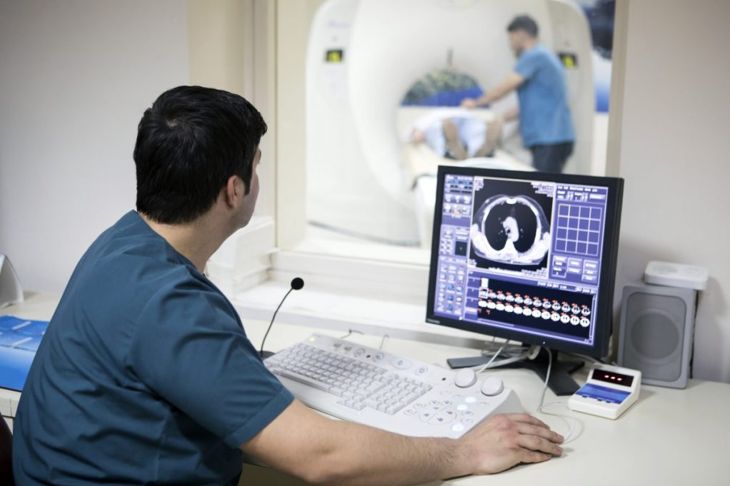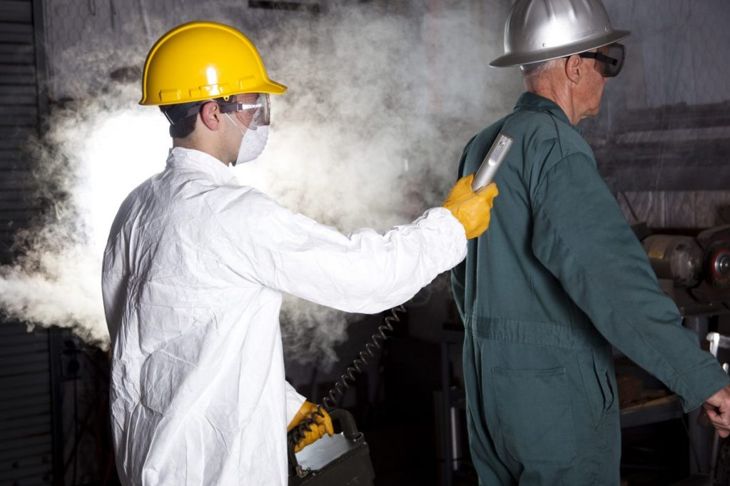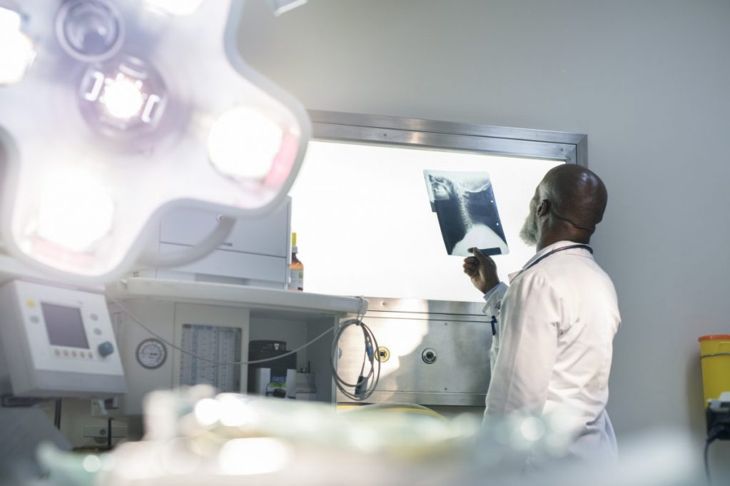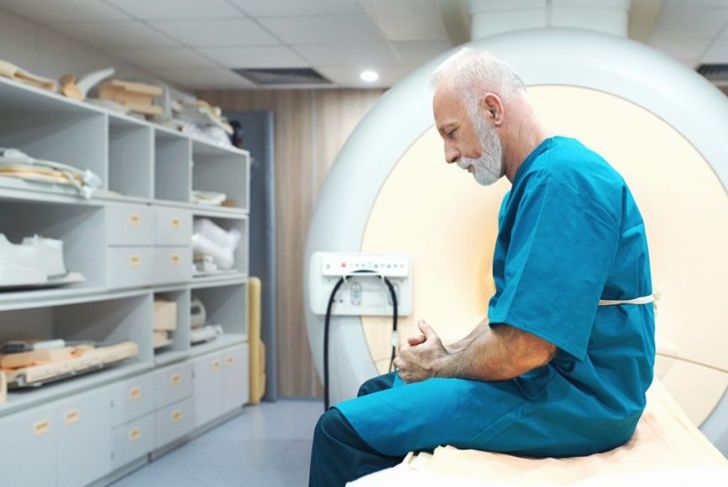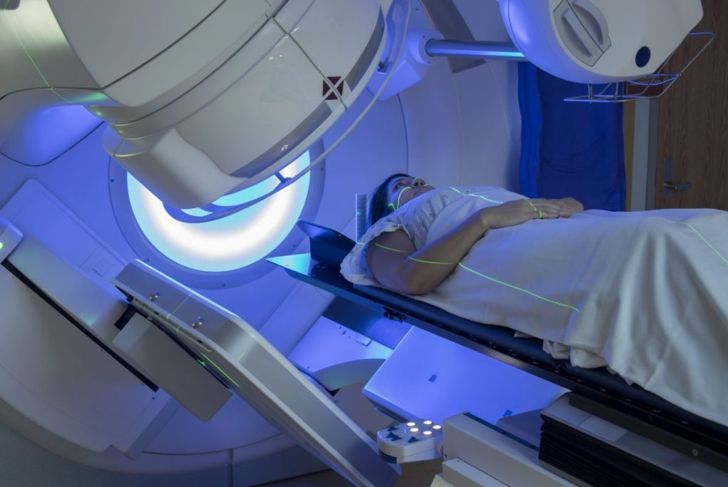Radiation has become a valuable tool for medical treatments, power generation, equipment sterilization, food preservation, and many other functions. Unfortunately, though it is useful, it is also quite dangerous. Exposure to high levels of radiation can cause radiation sickness. The most common form, acute radiation sickness, occurs following a single moment of exposure to an incredibly high dose of radiation. There are many other forms of radiation sickness, and symptoms vary wildly depending on the degree of exposure and the strength of the radiation.
Types of Radiation
Experts classify radiation as non-ionizing or ionizing. The former usually does not cause tissue damage in humans; it includes visible light, infrared light, microwaves, radio waves, and thermal radiation. Ionizing radiation has a larger range of uses but is also significantly more dangerous. Applications include x-rays, gamma rays, and particles. Some of the most helpful uses of ionizing radiation are medical imaging techniques such as x-rays, mammograms, and CT scans. It is also essential for nuclear reactors and nuclear weapons to function properly. Most forms of radiation sickness occur due to exposure to high levels of ionizing radiation.
Radiation Exposure Doses
Medical experts measure exposure to ionizing radiation with two units: roentgens and gray units. The gray unit (Gy) is the modern replacement for the “rad” unit of measurement and quantifies how much energy a person or object absorbed from radiation exposure. Total body exposure of 100 roentgens per rad, 1 Gy, can cause radiation sickness. Measurements beyond this frequently lead to death if the exposed individual does not receive medical attention. If a person experiences 100,000 roentgens per rad or 1,000 Gy, they will pass out immediately and likely die within an hour.
Stages and Symptoms of Acute Radiation Sickness
There are four stages of acute radiation sickness, each with unique symptoms:
- The prodromal stage features the classic symptoms of radiation sickness: nausea, vomiting, anorexia, and diarrhea. These symptoms may occur within minutes, or they may not manifest for several days following exposure.
- A patient in the latent stage typically looks and feels healthy for several weeks.
- After the latent stage, the patient will enter the overt or manifest illness stage. The symptoms for this stage depend on the specific syndrome and can last for several hours to several months.
- Recovery following the manifest illness stage usually takes between a few weeks and a couple of years.
Acute Radiation Sickness Syndromes
Though there are several acute radiation sickness syndromes, these three are the most common:
- Gastrointestinal syndrome occurs following a full body exposure of between 6 and 20 Gy. Symptoms include nausea, vomiting, and diarrhea, which can lead to dehydration and electrolyte depletion. In some cases, the tissue in the intestines begins to decay.
- Neurovascular syndrome can occur after a dose exceeding 30 Gy, though some symptoms may occur at doses as low as 10 Gy. This syndrome can result in dizziness, headaches, and confusion. It is almost always fatal.
- Hematopoietic syndrome features a drop in the number of blood cells. This syndrome requires only a low dose of 1 to 6 Gy. Affected people are often asymptomatic for several weeks, though they eventually develop conditions such as anemia. Antibody production also slows, which makes it easier for other illnesses to take hold simultaneously.
Cutaneous Radiation Injury
Acute doses of radiation under 3 Gy can cause damage to the skin and underlying tissues — a cutaneous radiation injury or CRI or cutaneous radiation syndrome. CRI can occur alongside acute radiation sickness, or it can manifest alone. As CRI progresses, it can affect skin pigmentation, causing fibrosis scarring in the tissue or squamous cell carcinoma. The skin often has a burn that does not heal.
Focal Radiation Injury
There are many uses for radiation in medicine. Radiation therapy is a common treatment for cancer and other conditions. Technicians use high doses of focused radiation to kill cancer cells. X-rays use low doses to provide an image of the skeletal structure. These functions can cause focal radiation injuries. Often, injuries from chronic exposure or prolonged exposure to radiation equipment can lead to CRI. The formation of sores or ulcers is common and may require surgery if severe.
Chronic Radiation Syndrome
After months or years of chronic exposure to high doses of radiation, a person can develop chronic radiation syndrome. Unlike acute radiation syndrome, the doses that cause this condition are small enough that the body’s natural healing can compete with the radiation damage. Chronic radiation syndrome is rare, particularly in western countries. Symptoms include tissue damage and cell damage, as well as mutations in germ cells that lead to other conditions. People with chronic radiation syndrome are prone to developing cancer.
Cancer and Radiation Sickness
Individuals with chronic radiation syndrome and hematopoietic syndrome are more likely to develop cancer because of their exposure to ionizing radiation. Radon, x-rays, and gamma rays can all cause significant cell and DNA damage. Most forms of radiation-caused cancer develop following accidental exposure. Exposure from medical tools and scans can also lead to cancer, but this is rare. Children are more likely to develop cancer following medical imaging. Additionally, people who have received radiation treatment for cancer are more likely to develop another form of cancer.
Diagnosis
In general, it is a simple process for doctors to diagnose radiation sickness. Physicians will inquire whether the patient is aware of exposure and will look for symptoms such as vomiting. Frequent blood tests over several days identify blood cell damage and changes in DNA. One of the most important parts of diagnosing radiation sickness is knowing exactly what type of radiation was the cause. This helps doctors determine how dangerous the exposure event was and how likely it is that their patient has radiation sickness.
Treatment
Treatment for radiation sickness is a long and complex process. Primarily, the patient must undergo decontamination to remove any external radioactive particles. This involves removing the clothes and gently washing the skin with water and soap. Internal decontamination requires an extensive process of introducing chemicals to remove radiation from the blood and organs. Treatment will then vary depending on the specific syndrome. Fluid exchanges including blood transfusions and electrolyte replacement are common. Preventing infection is a key part of the treatment process.

 Home
Home Health
Health Diet & Nutrition
Diet & Nutrition Living Well
Living Well More
More